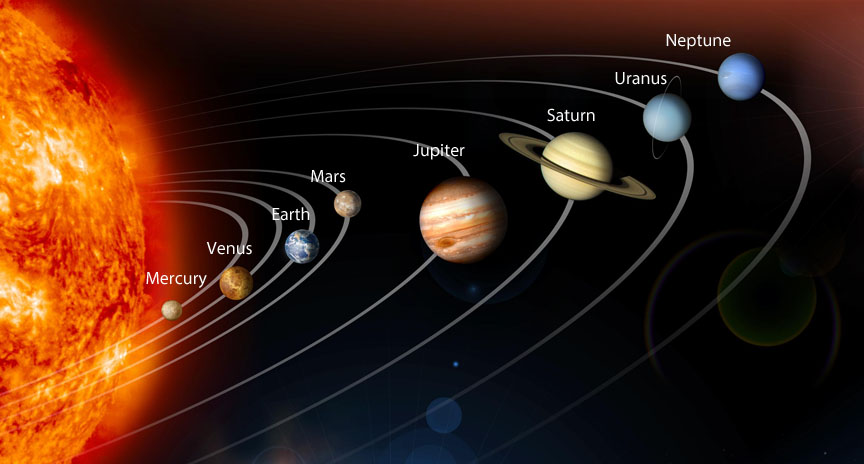Did you know that the Earth is the only planet that is not named after a Roman or Greek god? And that the name ‘Pluto’ was suggested by an 11-year old girl from England who loved classical mythology?
A story of how the planets got their names!
The Romans named Mercury, Venus, Mars, Jupiter and Saturn centuries ago, thanks to them being visible in the night sky with the naked eye. The other planets, Uranus and Neptune, were discovered much later after the invention of the telescope.
Mercury, being closest to the Sun, experiences the greatest gravitational pull off all the planets. Making it revolve around the Sun in about 88 Earth days. The Romans observed its quick movement across the sky and named it after Mercury, the god of travel and thievery.
Next up is Venus. The third brightest natural object in the sky (after the sun and moon). Its brightness and morning appearance is probably what inspired the Romans to name it after the goddess of love and beauty.
Earth wasn’t considered a planet for much of human history. Given our first-hand experience, it was thought that Earth was the center around which all the planets revolved. ‘Earth’ derives from the Germanic word ‘erde’. Which simply means ‘ground’. Poor Earth.
What’s the first thing that comes to your mind when you think of Mars? Elon Musk. But before him, it was probably the image of a mighty red rock. It was probably that blood-like color which led to the Romans naming it ‘Mars’, the son of Jupiter, and the God of war.
On the other side of the asteroid belt comes Jupiter. The largest planet of our Solar System. For perspective, its size is 2.5x of all other planets in the system COMBINED! No wonder it’s named after the Rome’s chief deity and the King of Gods – Jupiter.
Assisted only by their naked eye, Saturn was the furthest known planet to the ancients. Named after the father of Jupiter, Saturn was the Roman God of wealth and agriculture. Probably going up one generation also associates with their relative slower movement in the skies.
All was well until 1781, when an astronomer named William Herschel discovered Uranus. But that name didn’t gain full acceptance until 1850. Herschel wanted to name it ‘Georgium Sidus’ (George’s Star), after the British ruler at the time, King George III.
He said, “In the present more philosophical era, it would hardly be allowable to have recourse to the same method [as the ancients] and call it Juno, Pallas, Apollo or Minerva, for a name to our new heavenly body.” But the new name lacked popularity outside Britain.
Neptune is the farthest away planet from the Sun. It completes a solar revolution every 165 Earth years. It was first seen through a telescope in 1846 by German astronomer Johann Galle, using the mathematical calculations of French astronomer Urbain Le Verrier.
Fun fact – Le Verrier predicted the existence of Neptune just based on the behavior of the surrounding heavenly objects. So confident he was about the math that when the planet was actually discovered, it is said that he refused to even look at it. Coming back to the naming.
There was some discussion of naming the planet after Le Verrier, but ultimately Neptune, which has a vivid blue color, got its name from the Roman god of the sea. The name was in fact proposed by Verrier himself.
And lastly, Pluto. Though it is not deemed as a planet today, it was when it was given its name. Pluto was discovered at the Lowell Observatory in 1930. Falconer Madan, a librarian at the University of Oxford read about the discovery and mentioned it to his grand-daughter.
And it was this 11-year old Venetia Burney who suggested the name Pluto – the Roman God of the underworld who was able to make himself invisible. Perhaps because it’s so far from the Sun that it’s in perpetual darkness?
I should also mention that the Romans weren’t the only civilization that named the planets. For eg the Greeks called them Hermes, Aphrodite, Ares, Zeus, and Cronus. The Roman names are recognized by the International Astronomical Union (IAU) which makes them “official”.
